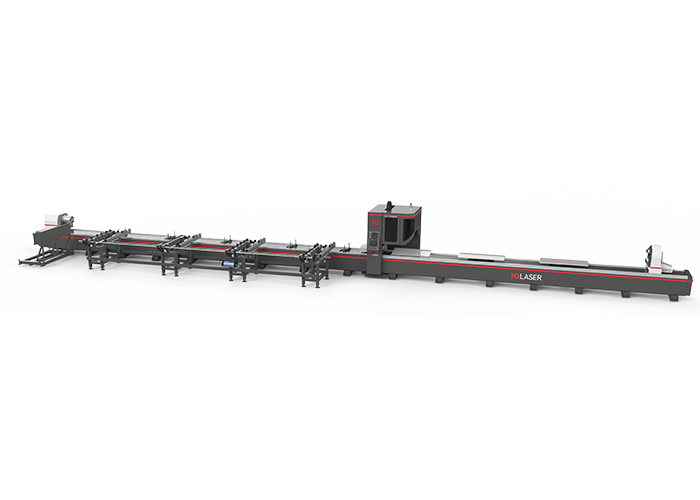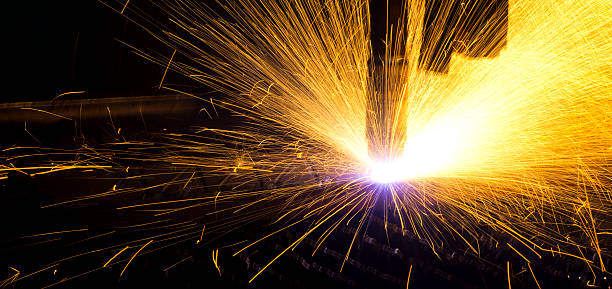1. Introduction
Metal laser cutting is a precise and versatile technique that utilizes the power of laser technology to cut through various types of metals. It has gained immense popularity in industries such as automotive, aerospace, electronics, and construction due to its ability to produce intricate designs and achieve high levels of accuracy.
2. How Does Metal Laser Cutting Work?

Metal laser cutting involves the use of a focused laser beam to melt or vaporize the material at the cutting point. The laser beam is generated by a laser source and directed through a series of mirrors to the cutting head. The cutting head focuses the laser beam into a small spot, creating a high-intensity heat source that melts or burns through the metal.
3. Types of Lasers Used in Metal Cutting
There are different types of lasers used in metal cutting, including:
- Fiber lasers: These are the most common type of lasers used for metal cutting. They generate a laser beam through the amplification of light within an optical fiber.
- CO2 lasers: These lasers use a mixture of carbon dioxide, nitrogen, and helium to generate the laser beam. They are primarily used for cutting thicker materials.
- Nd:YAG lasers: These lasers use a solid-state crystal as the laser medium and are often used for precision cutting.
4. Materials Suitable for Laser Cutting
Metal laser cutting is suitable for a wide range of materials, including:
- Steel: Carbon steel, stainless steel, and alloy steel
- Aluminum: Both pure aluminum and aluminum alloys
- Copper: Pure copper and copper alloys
- Brass
- Titanium
5. Advantages of Metal Laser Cutting
Metal laser cutting offers several advantages over traditional cutting methods, such as:
- Precision: Laser cutting provides high levels of accuracy and allows for intricate and complex designs.
- Speed: The laser beam can cut through metal at a rapid pace, significantly reducing production time.
- Versatility: Laser cutting can be used for various shapes, sizes, and thicknesses of metal.
- Minimal heat-affected zone: Laser cutting minimizes the heat transfer to the surrounding material, reducing distortion and warping.
- Non-contact process: As laser cutting is a non-contact process, there is no direct physical force applied to the material, minimizing the risk of damage.
6. Applications of Metal Laser Cutting
Metal laser cutting finds extensive applications across different industries, including:
- Automotive: Laser-cut components for car bodies, exhaust systems, and engine parts.
- Aerospace: Precision cutting of aircraft components, such as panels, brackets, and frames.
- Electronics: Production of circuit boards, electrical enclosures, and computer parts.
- Architecture: Fabrication of intricate metal structures, decorative panels, and architectural signage.
- Medical: Manufacturing of medical instruments, implants, and surgical tools.
7. Factors to Consider for Metal Laser Cutting

When opting for metal laser cutting, certain factors should be considered, including:
- Material thickness: Laser cutting is ideal for thin to medium thickness materials. Thicker materials may require additional power and longer processing times.
- Design complexity: Laser cutting is highly effective for intricate and detailed designs. However, extremely complex designs may require additional setup time.
- Cost considerations: While laser cutting offers numerous benefits, it is essential to consider the costs associated with the technology, including equipment, maintenance, and operational expenses.
8. Limitations of Metal Laser Cutting
Although metal laser cutting has various advantages, it also has a few limitations, such as:
- Material limitations: Some metals, such as reflective materials like copper and brass, are less suitable for laser cutting due to their high reflectivity.
- Initial setup time: Complex designs and specific material requirements may increase the initial setup time for laser cutting.
- Cost: The initial investment in laser cutting equipment can be relatively high, making it less feasible for small-scale operations.
9. Future Trends in Metal Laser Cutting
The field of metal laser cutting continues to evolve, and several trends are emerging, including:
- Increased automation: Advancements in robotics and artificial intelligence are leading to the development of automated laser cutting systems, improving efficiency and productivity.
- Integration of additive manufacturing: The combination of metal laser cutting and 3D printing technologies allows for the creation of complex, multi-component structures with enhanced functionality.
- Enhanced software capabilities: Software tools are being developed to optimize the laser cutting process, improve material utilization, and reduce production waste.
10. Conclusion
Metal laser cutting is a versatile and highly efficient method of cutting metals that offers numerous benefits over traditional cutting techniques. Its precision, speed, versatility, and ability to produce intricate designs make it a preferred choice in various industries. While it has some limitations and considerations, the continuous advancements in technology are expected to further enhance its capabilities in the future.
FAQs
Q1: Is metal laser cutting suitable for all types of metals?
A1: Metal laser cutting is suitable for a wide range of metals, including steel, aluminum, copper, brass, and titanium. However, some highly reflective metals may pose challenges due to their high reflectivity.
Q2: How precise is metal laser cutting?
A2: Metal laser cutting offers high levels of precision, allowing for intricate and detailed designs. The accuracy depends on factors such as the laser power, focusing optics, and material properties.
Q3: Can metal laser cutting be used for thick materials?
A3: Metal laser cutting is most effective for thin to medium thickness materials. Thicker materials may require higher laser power and longer processing times.
Q4: Is metal laser cutting an expensive process?
A4: While metal laser cutting can have a higher initial investment compared to traditional cutting methods, it offers significant cost savings in terms of reduced production time, minimal material waste, and improved efficiency.
Q5: What are the primary industries that benefit from metal laser cutting?
A5: Metal laser cutting finds applications in various industries, including automotive, aerospace, electronics, architecture, and medical. It is used for manufacturing components, structural elements, decorative pieces, and precision instruments.

